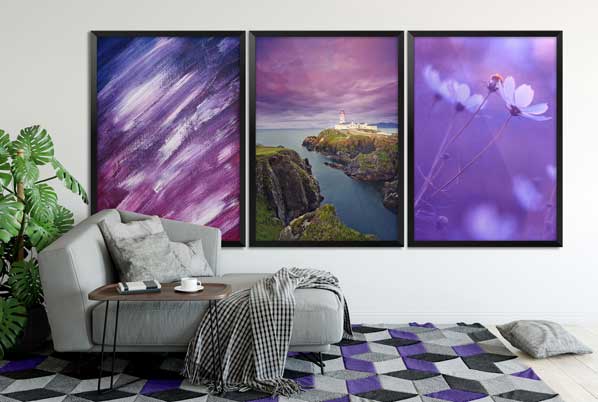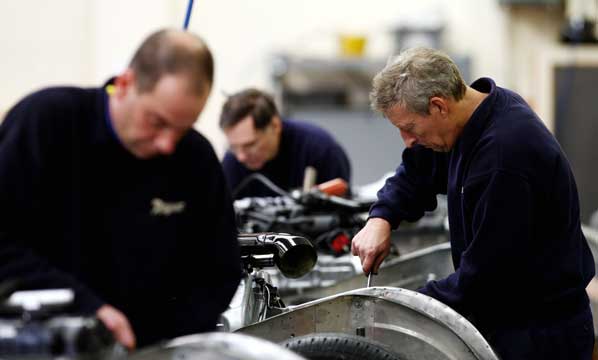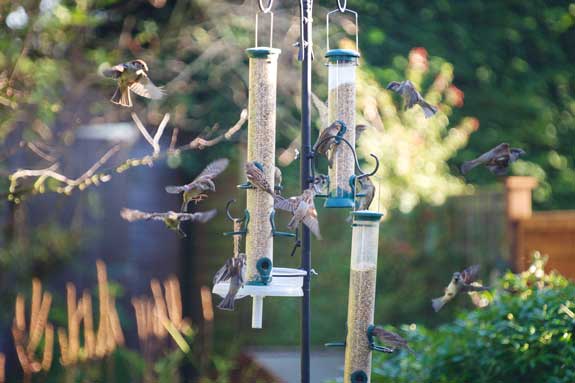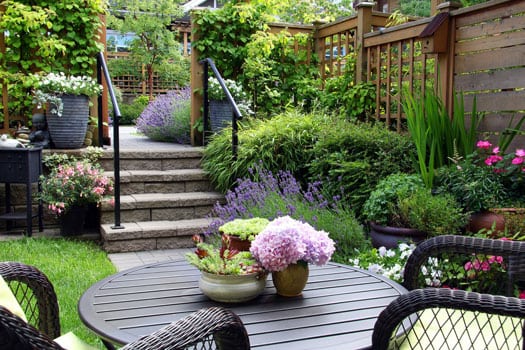
With longer days and better weather on the horizon, now’s the time to take a look at how your garden has fared over winter.
Garden designer and lecturer Hilary Thomas, who teaches garden and planting design online through Learning With Experts, explains:
“Gardens are great places to be creative, as even small additions such as painting the garden furniture, or the addition of colourful cushions, will have an instant and exciting effect.”
She offers five suggestions for giving your outdoor space a spring makeover.
1. Boost your boundaries
During the cooler months, we spend a lot of time looking at our gardens from the windows of the house, so take a long hard look at your garden and decide whether you like the view.
Walls and fences are the same height in a tiny garden as a large one, so their importance increases as the size of the garden decreases. If all you can see are bare fences, spring is the time to do something about it.
Plant some structural evergreens at the back of the border so that as they mature, they will hide the boundary fence. Use plants like
Elaeagnus x ebbingei, Osmanthus x burkwoodii, Phillyrea latifolia, Pittosporum tenuifolium and Viburnum sinus. Plant some clematis between these shrubs, and they will mix and mingle, creating a soft boundary around the garden with summer colour and all-year interest.
If you look out at an unsightly concrete or brick wall, consider having it rendered and painted with an exciting new shade of masonry paint. Think carefully about the colour and select a few climbing plants with flowers and foliage that will complement the new wall.
2. Screen with green
If your sitting area is overlooked by the next-door neighbours, consider planting a row of trees along the boundary to block out their view.
Go for narrow, fastigiate trees such as Pyrus calleryana ‘Chanticleer’ a flowering pear with wonderful autumn colour, or Carpinus betulus ‘Frans Fontaine’ a narrow form of our native hornbeam.
3. Think about how you use the garden
Consider the main use of the garden and if it is primarily a space to sit, relax and entertain friends, consider digging up the lawn and enlarging the sitting area. Keep the paving simple and mix slabs with gravel or stone chippings to keep costs down.
4. Revamp your garden furniture
If the garden furniture is looking a little tired and you don’t want to buy new, put it in the garage or shed to dry off before rubbing it down and applying a coat of paint.
Try to select a colour that will fit in with the colour of the planting around the sitting area. There are paints suitable for both wood and metal furniture. Add some colourful cushions and tableware too.
5. Perk up your patio with pots
Spice up your back and front garden with colourful, welcoming pots. Your front garden should offer a welcome to visitors, so try to have a selection of colourful pots near your front door.
Containers come in a variety of materials, but a group of terracotta or glazed pots will suit most situations. Make sure the pots you buy will be the right size once you get them home, because most people buy containers that are too small and out of scale with the house and patio.
You can grow almost anything in a container; small trees, shrubs, herbaceous plants, bulbs and seasonal bedding. Clipped evergreens such as Ilex crenata, Buxus sempervirens and Phillyrea latifolia add a touch of formality to a group of flowering plants.
In spring, narcissus and tulips will add seasonal excitement and colour to a container planted up with a winter flowering shrub or coloured winter stems. In summer, a mix of herbaceous plants and seasonal bedding can provide colour from June through to autumn.
For more information on the full range of courses visit www.learningwithexperts.com.
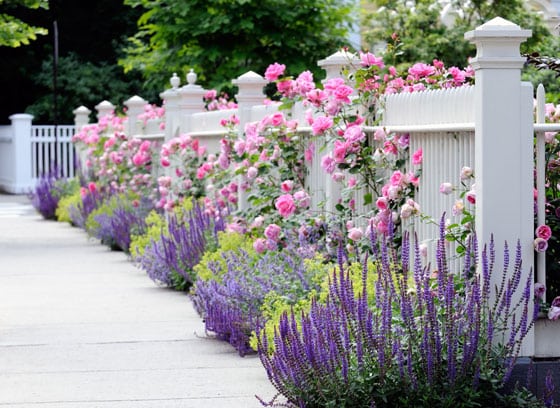


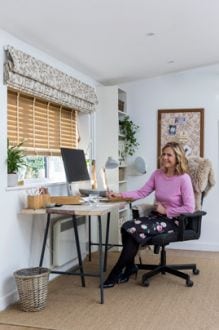 A calm and stylish space can boost productivity and look good, as entrepreneur Liz Earle tells Gabrielle Fagan.
Millions of us now spending some, if not all, of our time working from home. And one of the joys of working in your own space is that you’re the boss when it comes to design and ambience – so you can escape dull desks and bland decor and kit out your own personalised sanctuary to suit your taste.
Entrepreneur and beauty and wellbeing expert, Liz Earle, has teamed up with blinds and curtain specialist Hillarys (hillarys.co.uk), to reveal her own home office and simple but effective tips to help you conjure a stylish work area of your own, where you can be happy as well as productive.
“It’s a quick and easy strategy for creating the perfect space, or could be used for an existing office makeover, which could be just what you need to reinvigorate your home-working life,” enthuses mother-of-five Earle, 54, who lives on a farm in the West Country. “There’s undoubtedly a whole host of benefits to home-working, particularly from a health and wellbeing perspective, whether that’s because you’re escaping the daily commute or because you’re able to spend more time with the family.”
Read on to discover Earle’s approach for creating a calm and stylish home office…
1. Work with the light
“Put your desk in front of a window; plenty of natural light is the holy grail, as it’s known to significantly help increase energy, creativity and productivity,” advises Earle. “Wood or faux wood Venetian blinds are perfect for home office windows as they filter light, which will minimise glare on a computer screen and the slats can be adjusted to control light levels when the sun moves round during the day. Go for function but don’t forget about style. Roman blinds soften the look, and a pretty botanical fabric brings a lovely feel of nature into the room.”
A calm and stylish space can boost productivity and look good, as entrepreneur Liz Earle tells Gabrielle Fagan.
Millions of us now spending some, if not all, of our time working from home. And one of the joys of working in your own space is that you’re the boss when it comes to design and ambience – so you can escape dull desks and bland decor and kit out your own personalised sanctuary to suit your taste.
Entrepreneur and beauty and wellbeing expert, Liz Earle, has teamed up with blinds and curtain specialist Hillarys (hillarys.co.uk), to reveal her own home office and simple but effective tips to help you conjure a stylish work area of your own, where you can be happy as well as productive.
“It’s a quick and easy strategy for creating the perfect space, or could be used for an existing office makeover, which could be just what you need to reinvigorate your home-working life,” enthuses mother-of-five Earle, 54, who lives on a farm in the West Country. “There’s undoubtedly a whole host of benefits to home-working, particularly from a health and wellbeing perspective, whether that’s because you’re escaping the daily commute or because you’re able to spend more time with the family.”
Read on to discover Earle’s approach for creating a calm and stylish home office…
1. Work with the light
“Put your desk in front of a window; plenty of natural light is the holy grail, as it’s known to significantly help increase energy, creativity and productivity,” advises Earle. “Wood or faux wood Venetian blinds are perfect for home office windows as they filter light, which will minimise glare on a computer screen and the slats can be adjusted to control light levels when the sun moves round during the day. Go for function but don’t forget about style. Roman blinds soften the look, and a pretty botanical fabric brings a lovely feel of nature into the room.”
 2. Make an eco desk choice
“Make your office more eco-friendly with a desk made from reclaimed scaffolding boards and simple trestle legs,” Earle suggests. “Scaffolding boards can be picked up cheaply from a salvage yard, and the beauty of doing this is that you can design your desk according to your space and needs. Make sure there’s room for a task light and desk accessories.”
3. Invest in a great chair
“As tempting as it sounds, dragging a chair from the dining room or a stool from the kitchen is a false economy,” Earle warns. “An ergonomically designed chair may not give you the designer feel you had in mind – but your back will thank you for it! You can always pretty it up with a cosy sheepskin or throw.
“Don’t hunch over a laptop – set up a computer monitor at eye level and use a separate keyboard, ergonomic mouse or track pad. Rest forearms on the desk while typing and invest in a simple foot rest to ensure you sit with legs at a comfortable 90-degree angle to the floor.”
TIP: Try to do simple stretches and strength moves regularly throughout the day. You don’t necessarily need equipment – try out chair yoga which can be done while seated.
4. Get crafty with accessories
“It needn’t cost the earth to decorate your office. Charity shops and car-boot sales are perfect hunting grounds for quirky, vintage pieces, or you could indulge in some DIY creativity,” says Earle. “Cover plain cardboard box files with wallpaper or fabric for a fabulous bespoke look. A pin-board, made from a wooden picture frame, foam and fabric, is a great way to display photos, to-do lists or other information you want to see at a glance.”
TIP: Schedule things in your diary that make you happy, not just work tasks.
5. Bring nature into your space
“It’s been proven that plants in the workplace can reduce stress levels and increase productivity,” Earle points out. “Aside from these health benefits, plants are a cheap and cheerful way to add decoration and bring the outdoors in. I opt for green, leafy plants like ferns or ivy, avoiding cacti whose spikes can create the opposite of a relaxed feeling, or flowers with a strong scent, which can be distracting or irritating.” And if caring for real plants doesn’t quite work out for you, there are great faux options available these days, so you can still get that calming, leafy look.
2. Make an eco desk choice
“Make your office more eco-friendly with a desk made from reclaimed scaffolding boards and simple trestle legs,” Earle suggests. “Scaffolding boards can be picked up cheaply from a salvage yard, and the beauty of doing this is that you can design your desk according to your space and needs. Make sure there’s room for a task light and desk accessories.”
3. Invest in a great chair
“As tempting as it sounds, dragging a chair from the dining room or a stool from the kitchen is a false economy,” Earle warns. “An ergonomically designed chair may not give you the designer feel you had in mind – but your back will thank you for it! You can always pretty it up with a cosy sheepskin or throw.
“Don’t hunch over a laptop – set up a computer monitor at eye level and use a separate keyboard, ergonomic mouse or track pad. Rest forearms on the desk while typing and invest in a simple foot rest to ensure you sit with legs at a comfortable 90-degree angle to the floor.”
TIP: Try to do simple stretches and strength moves regularly throughout the day. You don’t necessarily need equipment – try out chair yoga which can be done while seated.
4. Get crafty with accessories
“It needn’t cost the earth to decorate your office. Charity shops and car-boot sales are perfect hunting grounds for quirky, vintage pieces, or you could indulge in some DIY creativity,” says Earle. “Cover plain cardboard box files with wallpaper or fabric for a fabulous bespoke look. A pin-board, made from a wooden picture frame, foam and fabric, is a great way to display photos, to-do lists or other information you want to see at a glance.”
TIP: Schedule things in your diary that make you happy, not just work tasks.
5. Bring nature into your space
“It’s been proven that plants in the workplace can reduce stress levels and increase productivity,” Earle points out. “Aside from these health benefits, plants are a cheap and cheerful way to add decoration and bring the outdoors in. I opt for green, leafy plants like ferns or ivy, avoiding cacti whose spikes can create the opposite of a relaxed feeling, or flowers with a strong scent, which can be distracting or irritating.” And if caring for real plants doesn’t quite work out for you, there are great faux options available these days, so you can still get that calming, leafy look.
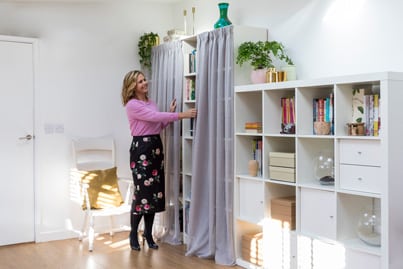 6. Conceal the clutter
“But remember, the more stuff you add to your desk, the more your brain has to keep track of,” adds Earle. “Working in a crowded space can be mentally exhausting and distracting, even if you don’t realise it. Get creative with storage. I’ve used soft, floaty voile curtains to disguise a shelving unit.”
7. Create an uplifting display
Finally, treasured photos that spark joy, and meaningful sayings to keep motivation levels up, make an ideal finishing touch. “Pictures and photographs can be a great way to inspire creativity and a feeling of wellness,” says Earle. “Pick out three or four that are significant to you and make sure those are in your view.”
Conclusion
Whether
6. Conceal the clutter
“But remember, the more stuff you add to your desk, the more your brain has to keep track of,” adds Earle. “Working in a crowded space can be mentally exhausting and distracting, even if you don’t realise it. Get creative with storage. I’ve used soft, floaty voile curtains to disguise a shelving unit.”
7. Create an uplifting display
Finally, treasured photos that spark joy, and meaningful sayings to keep motivation levels up, make an ideal finishing touch. “Pictures and photographs can be a great way to inspire creativity and a feeling of wellness,” says Earle. “Pick out three or four that are significant to you and make sure those are in your view.”
Conclusion
Whether  London Tops The Tables
London Tops The Tables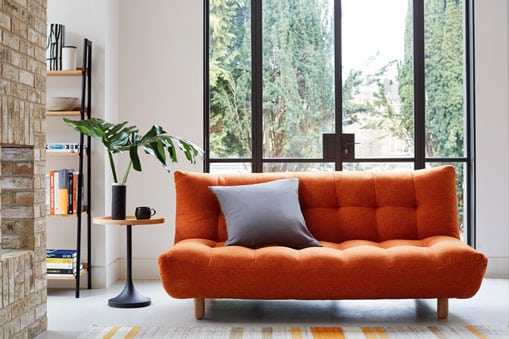
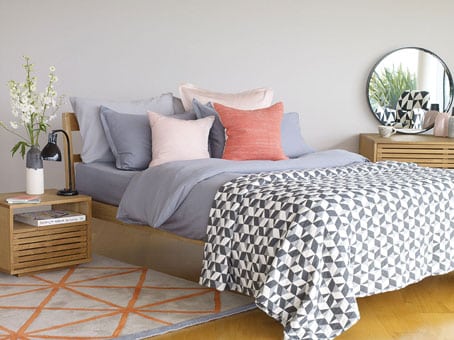
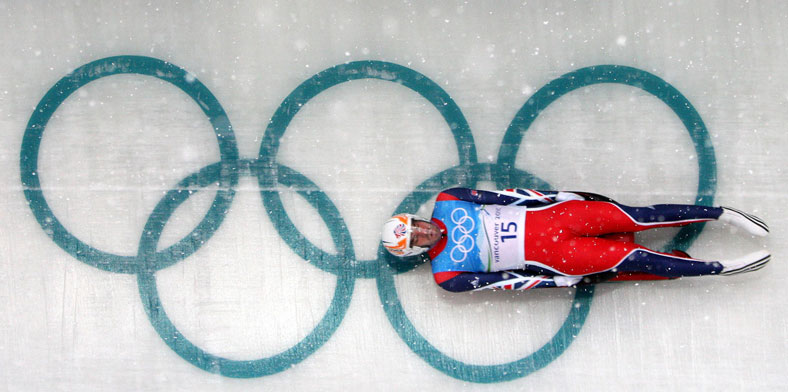
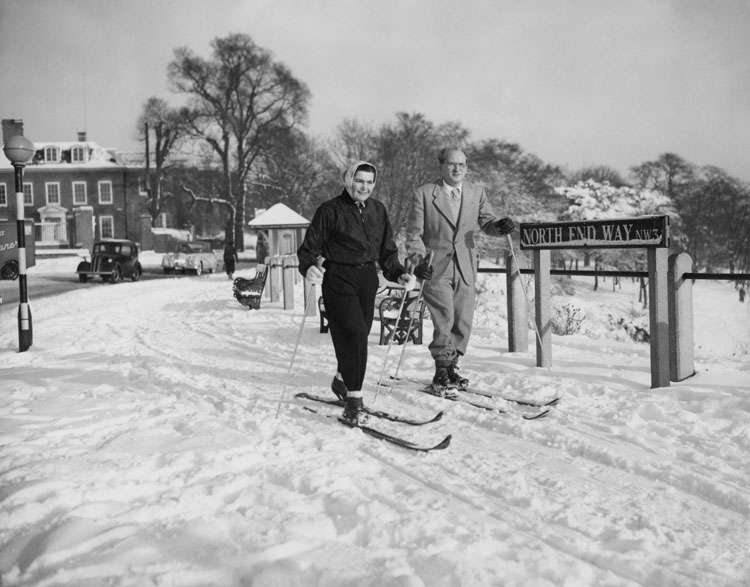 Before the Winter Games were established as their own separate event, the London Summer Games in 1908 actually included figure skating, making it the oldest official Olympic sport and the only event in which women could participate from the very beginning.
Before the Winter Games were established as their own separate event, the London Summer Games in 1908 actually included figure skating, making it the oldest official Olympic sport and the only event in which women could participate from the very beginning.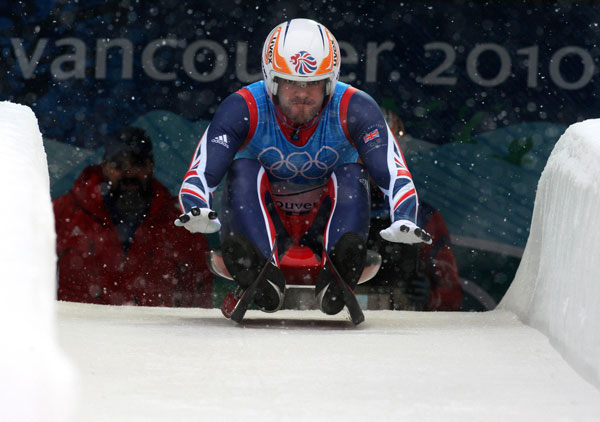 One of the oldest Olympic sports, Luge, which comes from the French word for sledge, sees athletes lying on their backs on a very small sled, and zipping down an icy track at around 140kmph – without brakes!
One of the oldest Olympic sports, Luge, which comes from the French word for sledge, sees athletes lying on their backs on a very small sled, and zipping down an icy track at around 140kmph – without brakes!
 Suspended by Arabella Dorman
Suspended by Arabella Dorman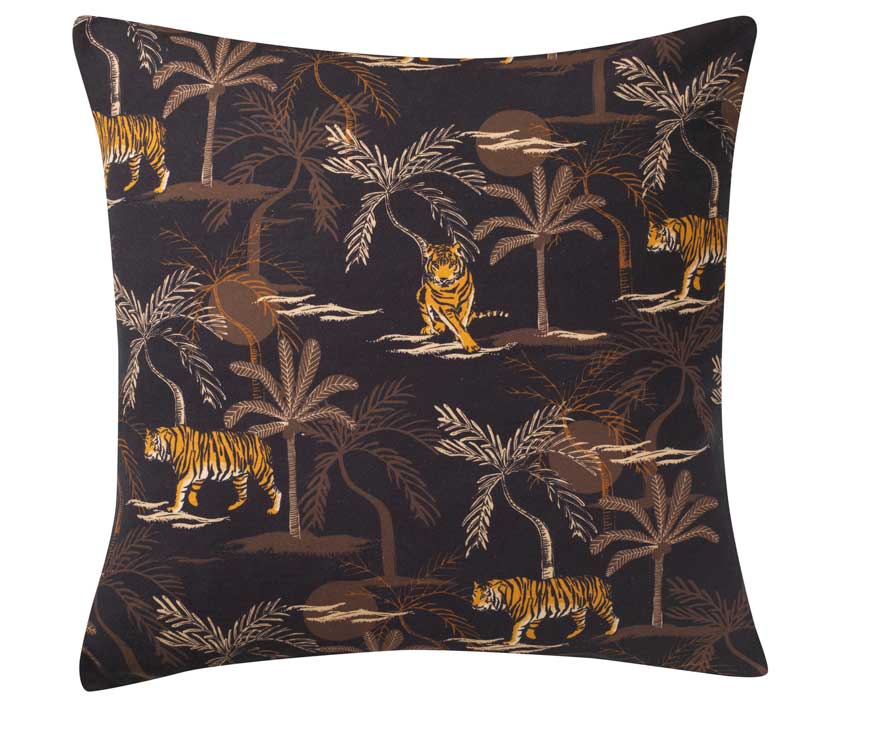
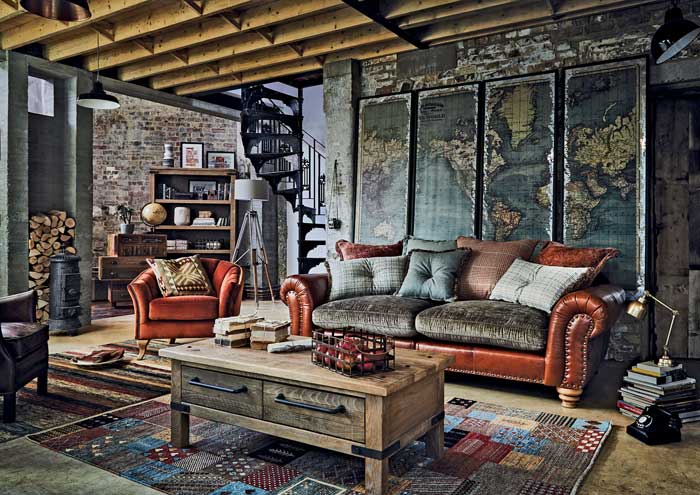
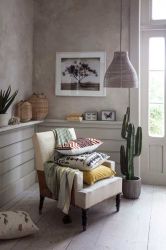






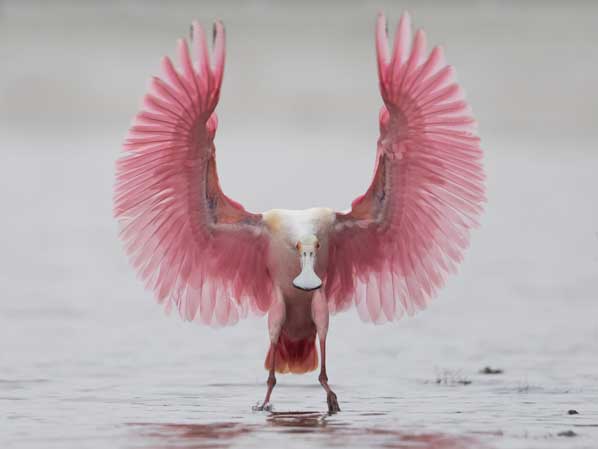


 A factor influencing this outcome was the
A factor influencing this outcome was the 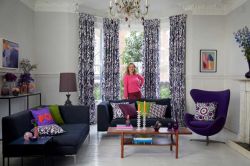 Surely one of the grandest hues on the colour wheel, with its associations with royalty, wizardry and luxury, purple is the hot shade for 2018.
Surely one of the grandest hues on the colour wheel, with its associations with royalty, wizardry and luxury, purple is the hot shade for 2018.
